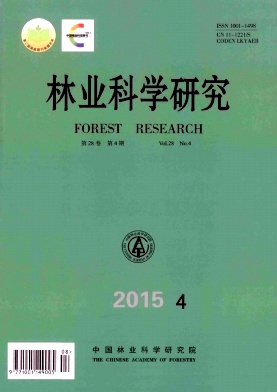|
[1]
|
李帅锋,刘万德,苏建荣,等. 滇西北云南红豆杉群落物种生态位与种间联结[J]. 植物科学学报,2012,30 (6):568-576.
|
|
[2]
|
贾呈鑫卓,李帅锋,苏建荣,等.择伐对思茅松天然林乔木种间与种内关系的影响[J].植物生态学报,2014,38(12):1296-1306.
|
|
[3]
|
Levine J M, HilleRisLambers J. The importance of niches for the maintenance of species diversity[J].Nature,2009,461(7261):254-258. |
|
[4]
|
胡理乐,李 新,江明喜,等.宣恩七姊妹山共同群落种间联结分析[J].武汉植物学研究,2003,21(3):203-208.
|
|
[5]
|
史作民,刘世荣,程瑞梅,等.宝天曼落叶阔叶林种间联结性研究[J].林业科学,2001,37(2):29-35.
|
|
[6]
|
马世荣,张希彪,郭小强,等.子午岭天然油松林乔木层种内与种间竞争关系研究[J].西北植物学报,2012,32(9):1882-1887.
|
|
[7]
|
王祥福,郭泉水,巴哈尔古丽,等.崖柏群落优势乔木种群生态位[J].林业科学,2008,44(4):6-13.
|
|
[8]
|
郭泉水,包奋强,王祥福,等. 三尖杉所属群落优势乔木树种种间关系[J]. 林业科学研究,2008,21(5):662-668.
|
|
[9]
|
李先琨,黄玉清,苏宗明.南方红豆杉群落主要树木种群联结关系初步研究[J].生态学杂志,1999,18(3):10-14.
|
|
[10]
|
Fu L G, Li N, Robert R M.Flora of China[M]. Beijing: Science Press, 1999:85-88. |
|
[11]
|
Lang X D, Su J R, Lu S G, et al. A taxonomic revision of the genus Cephalotaxus (Taxaceae)[J]. Phytotaxa, 2013, 84 (1): 1-24. |
|
[12]
|
郎学东. 三尖杉属系统分类学研究[D]. 昆明:云南大学,2013.
|
|
[13]
|
Abdelkafi H, Nay B. Natural products from Cephalotaxus ssp., chemical diversity and synthetic aspects[J]. Natural Product Reports, 2012, 29 (8): 845-869. |
|
[14]
|
戴晓勇,林泽信,张贵云,等. 篦子三尖杉种子育苗技术研究[J]. 种子,2012,31(8):122-125.
|
|
[15]
|
郎学东,苏建荣,张志钧,等. 濒危植物篦子三尖杉的群落特征[J]. 林业科学研究,2011,24(6):727-735.
|
|
[16]
|
缪绅裕,曾庆昌,王厚麟,等. 广东仁化篦子三尖杉种群及其生境特征研究[J]. 林业资源管理,2014,(2):98-104.
|
|
[17]
|
陈少瑜,司马永康,方 波. 篦子三尖杉的遗传多样性及濒危原因[J]. 西北林学院学报,2003,18(2):29-32.
|
|
[18]
|
周 煜,胡玉熹,林金星,等. 中国特有植物篦子三尖杉的生物学特性及其保护[J]. 广西植物,1997,17(3):249 -254.
|
|
[19]
|
马忠武,保关福. 三尖杉属植物的双黄酮成分及其化学分类的研究[J]. 植物分类学报,1990,28(2):48-53.
|
|
[20]
|
Ludwin J A, Reynods J F. Statistical Ecology: A Primer on Methods and Computing[M]. New York: A Wiley-Interscience Pubhcation, 1988:145-155. |
|
[21]
|
张金屯.数量生态学[M].北京:科学出版社,1995:21.
|
|
[22]
|
李帅锋,刘万德,苏建荣,等.云南兰坪云南红豆杉种群年龄结构与空间分布格局分析[J].西北植物学报,2013,33(4):792-799.
|
|
[23]
|
苏志尧,吴大荣,陈北光.粤北天然林优势种群生态位研究[J].应用生态学报,2003,24(1):25-29.
|
|
[24]
|
高俊香,鲁小珍,马 力,等.凤阳山常绿阔叶林乔木层优势种群生态位分析[J].南京林业大学学报:自然科学版,2010,34(4):157-160.
|
|
[25]
|
郭泉水,王祥福,巴哈尔古丽,等. 崖柏群落优势乔木树种种间关系[J]. 生态学杂志,2007,26(12):1911-1917.
|





 DownLoad:
DownLoad: